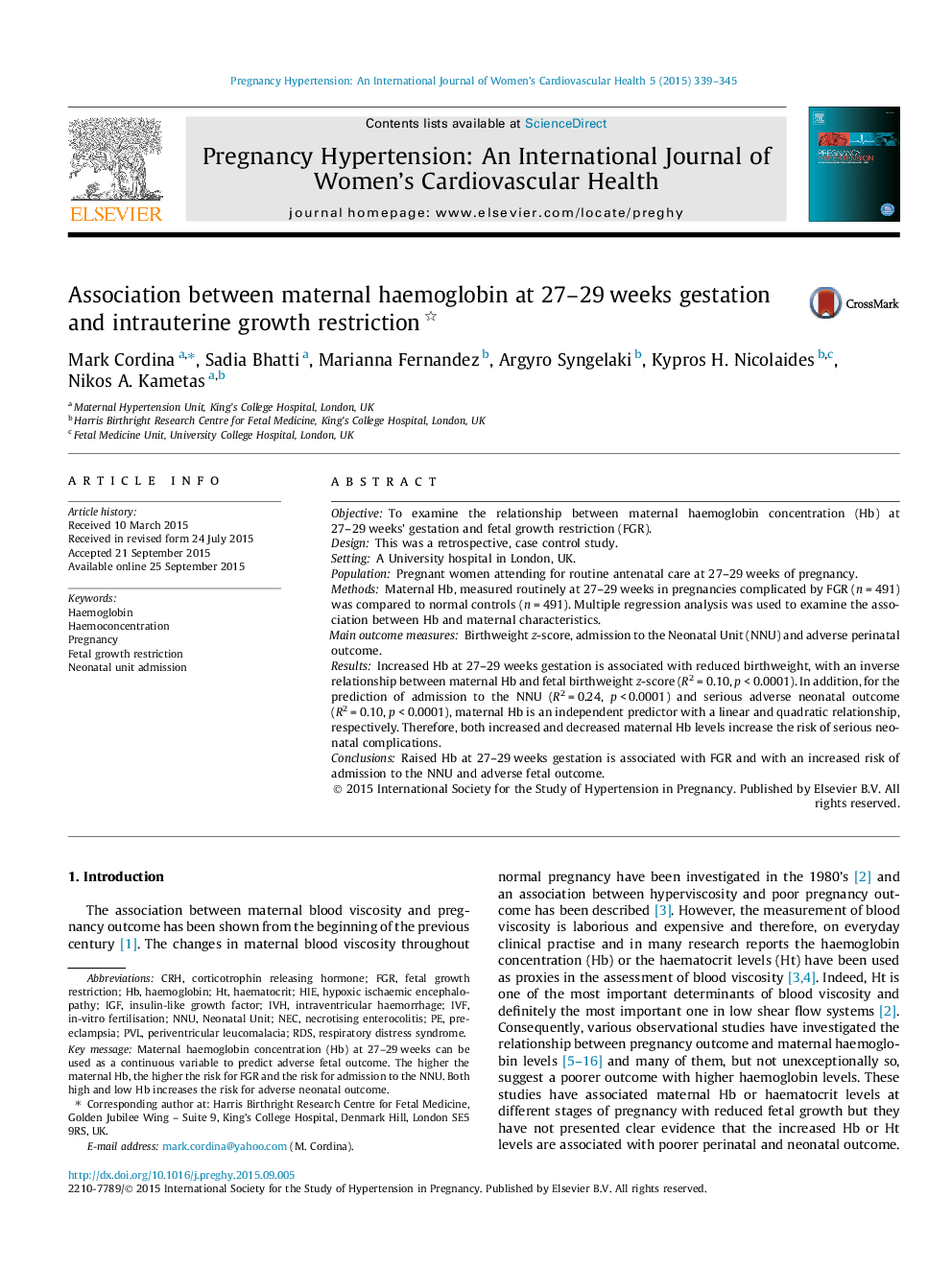| Article ID | Journal | Published Year | Pages | File Type |
|---|---|---|---|---|
| 5996925 | Pregnancy Hypertension: An International Journal of Women's Cardiovascular Health | 2015 | 7 Pages |
â¢Raised haemoglobin at 27-29 weeks gestation is associated with fetal growth restriction.â¢Hemoconcentration is related to increased admission to NNU and adverse fetal outcome.â¢Maternal haemorheology parameters show potential in screening for FGR.
ObjectiveTo examine the relationship between maternal haemoglobin concentration (Hb) at 27-29 weeks' gestation and fetal growth restriction (FGR).DesignThis was a retrospective, case control study.SettingA University hospital in London, UK.PopulationPregnant women attending for routine antenatal care at 27-29 weeks of pregnancy.MethodsMaternal Hb, measured routinely at 27-29 weeks in pregnancies complicated by FGR (n = 491) was compared to normal controls (n = 491). Multiple regression analysis was used to examine the association between Hb and maternal characteristics.Main outcome measuresBirthweight z-score, admission to the Neonatal Unit (NNU) and adverse perinatal outcome.ResultsIncreased Hb at 27-29 weeks gestation is associated with reduced birthweight, with an inverse relationship between maternal Hb and fetal birthweight z-score (R2 = 0.10, p < 0.0001). In addition, for the prediction of admission to the NNU (R2 = 0.24, p < 0.0001) and serious adverse neonatal outcome (R2 = 0.10, p < 0.0001), maternal Hb is an independent predictor with a linear and quadratic relationship, respectively. Therefore, both increased and decreased maternal Hb levels increase the risk of serious neonatal complications.ConclusionsRaised Hb at 27-29 weeks gestation is associated with FGR and with an increased risk of admission to the NNU and adverse fetal outcome.
